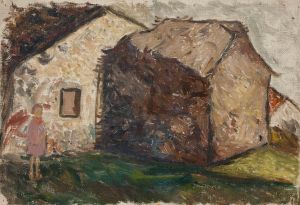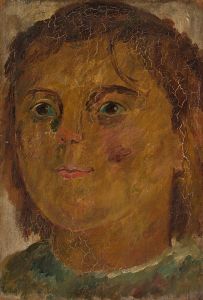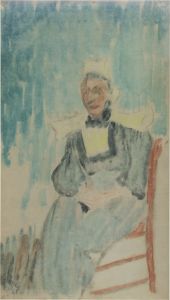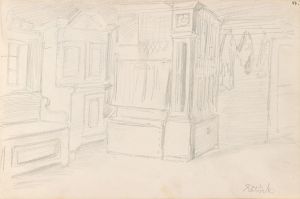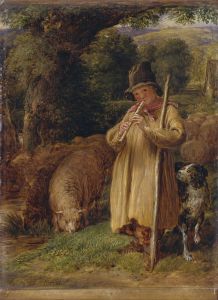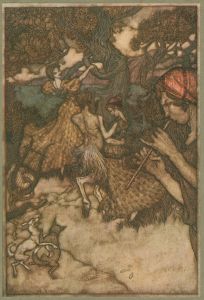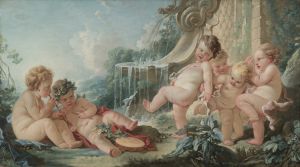
Bagpiper
A hand-painted replica of Tadeusz Makowski’s masterpiece Bagpiper, meticulously crafted by professional artists to capture the true essence of the original. Each piece is created with museum-quality canvas and rare mineral pigments, carefully painted by experienced artists with delicate brushstrokes and rich, layered colors to perfectly recreate the texture of the original artwork. Unlike machine-printed reproductions, this hand-painted version brings the painting to life, infused with the artist’s emotions and skill in every stroke. Whether for personal collection or home decoration, it instantly elevates the artistic atmosphere of any space.
Tadeusz Makowski was a Polish painter known for his unique style that combined elements of folk art, symbolism, and modernism. He was born on January 29, 1882, in Oświęcim, Poland, and he spent a significant part of his career in France, where he was influenced by the vibrant art scene of early 20th-century Paris. Makowski's work often depicted scenes of everyday life, characterized by a whimsical and childlike quality.
One of his notable works is "Bagpiper," a painting that exemplifies his distinctive approach to art. Created during a period when Makowski was deeply engaged with themes of rural life and traditional customs, "Bagpiper" captures the essence of a folk musician, a subject that resonates with Makowski's interest in Polish culture and heritage.
The painting features a solitary figure playing the bagpipes, an instrument with deep roots in European folk music. Makowski's portrayal of the bagpiper is marked by a simplicity and directness that are hallmarks of his style. The figure is rendered with bold outlines and a limited color palette, emphasizing form and expression over intricate detail. This approach reflects Makowski's affinity for the straightforward and unpretentious qualities of folk art.
Makowski's use of color in "Bagpiper" is both restrained and evocative. The muted tones create a sense of nostalgia and timelessness, while the subtle contrasts highlight the central figure against a subdued background. This technique draws the viewer's attention to the bagpiper, inviting contemplation of the musician's role in the cultural landscape.
The composition of "Bagpiper" is notable for its balance and harmony. Makowski's arrangement of shapes and lines guides the viewer's eye through the painting, creating a sense of rhythm that echoes the musical theme. The bagpiper's posture and the flow of the bagpipes suggest movement, imbuing the static image with a dynamic quality.
Makowski's interest in the innocence and simplicity of childhood is evident in "Bagpiper." The painting conveys a sense of wonder and curiosity, qualities that are often associated with Makowski's broader body of work. His ability to capture the essence of his subjects with minimal detail is a testament to his skill as an artist and his deep understanding of human emotion.
"Bagpiper" is a reflection of Makowski's broader artistic vision, which sought to bridge the gap between tradition and modernity. By drawing on elements of folk art and infusing them with a modern sensibility, Makowski created works that were both rooted in cultural heritage and innovative in their execution.
Throughout his career, Tadeusz Makowski remained committed to exploring themes of identity, culture, and the human experience. His work, including "Bagpiper," continues to be celebrated for its unique blend of simplicity and depth, offering viewers a glimpse into the world through the eyes of an artist who cherished the beauty of everyday life.






